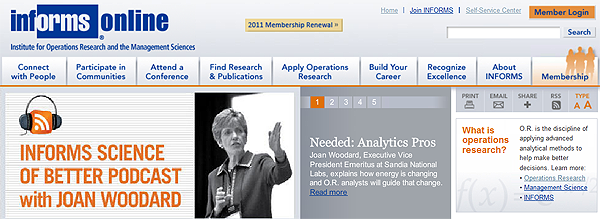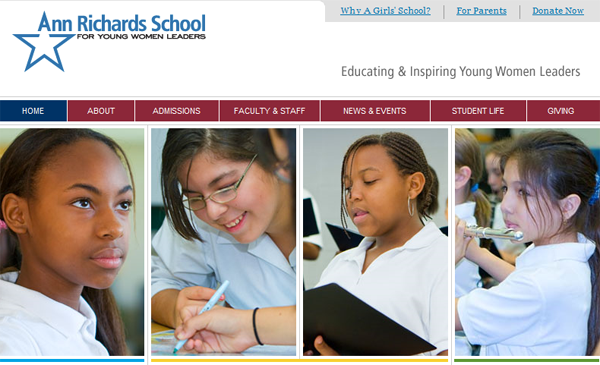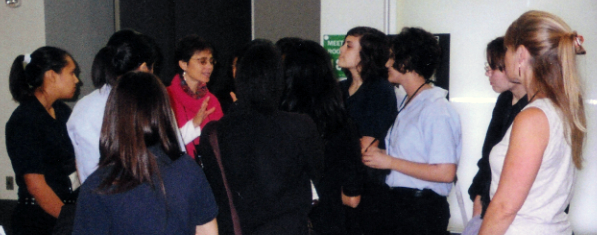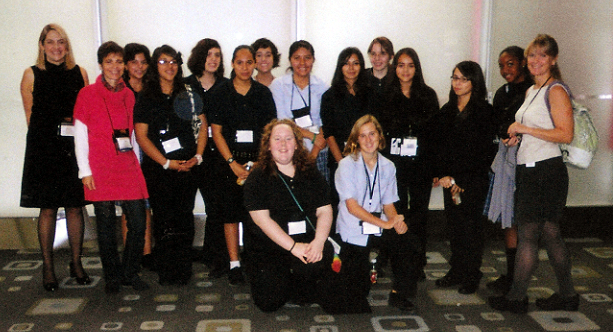Role Models for Creative Minds
by Andrew Boyd
Today, possibilities. The University of Houston's College of Engineering presents this series about the machines that make our civilization run, and the people whose ingenuity created them.
It left me smiling from ear to ear.
I recently attended the annual meeting of INFORMS, a group that uses mathematics to solve all sorts of problems. Designing efficient buildings. Improving radiation treatment. Scheduling sports teams. If math can help do a better job, someone from INFORMS is probably working on it.

But my smile didn't come from a great breakthrough in the world of problem solving. It came from a small gathering of middle-school girls who were on the edge of their seats. The girls were from the Ann Richards School for Young Women Leaders. It's a competitive program in the Austin public school system open to girls who want to achieve. The school's mission includes "preparing young women to attend and graduate from college," and encouraging them to "solve problems creatively and ethically in support of our global community."

The girls who made their way to the meeting had all expressed interest in an engineering career. They were listening to three successful members of the INFORMS community, all of whom were women. An analyst from IBM talked about her time working with the U.S. Postal Service, where she used mathematics to help reduce shipping costs. Another spoke about her years at Intel, including her time overseeing the manufacture of a specialized computing chip. The final speaker talked about her role as the incoming president of INFORMS. All of the participants spoke of family and education and the broader meaning of success.
And as the women shared their stories, the girls were captivated. "Did your parents help you in school?" asked one. "What's your favorite part of the job?" asked another. At the end of the allotted time, the meeting spilled into the hallway with unabated question after question.

The girls from the Ann Richards School are fortunate. They've found their way into a supportive environment that will help them achieve their potential. But what about those young men and women who don't? I'm forever amazed by the creative young minds I encounter in my travels. At the same time, I'm concerned that many can't envision the possibilities in their lives.
I recently spoke with a young man who wanted to be a physician's assistant. That's wonderful, I told him. But, I added, have you ever considered being a doctor? Or a biomedical researcher? The thought had never crossed his mind. It was simply outside his sphere of possibilities.
The professional women who shared their life stories at the INFORMS meeting weren't simply telling young minds what was possible. They were demonstrating what was possible. They were living proof. If a picture's worth a thousand words, then for formative young minds, meeting good role models is worth a million.

I'm Andy Boyd at the University of Houston, where we're interested in the way inventive minds work.
Notes and references:
The girls attending the INFORMS meeting were brought by their teacher, Shireen Dadmehr. The individuals who spoke with the girls included: Robin Lougee, Research Staff Member, IBM T. J. Watson Research Center; Tiffany Sargent, the Intel corporation and Science and Technology Policy Fellow, the National Science Foundation; and Rina Schneur, Verizon Laboratories and INFORMS President.
More about INFORMS can be found at www.informs.org, and about the Ann Richards School for Young Women Leaders at www.annrichardsschool.org.
All pictures by E. A. Boyd.